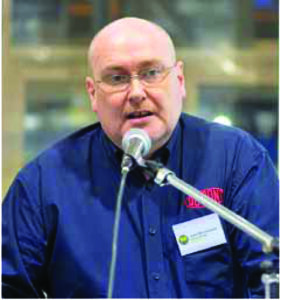CO2 refrigerant for VW Group
- PostedPublished 14 June 2015
World’s second-largest carmaker commits to R744 as AC refrigerant
German automotive giant Volkswagen Group hit the headlines in March when it confirmed its pursuit of carbon dioxide as an air conditioning refrigerant as part of a plan to become the world’s most environmentally sustainable carmaker by 2018.

According to German newspaper Frankfurter Rundschau, VW Group has ordered CO2-based air conditioning components from a Japanese supplier for use in two next-generation luxury flagship models, the VW Phaeton and Audi A8.
In its official announcement, VW Group promised that CO2 technology “will be rolled out progressively over its entire vehicle fleet”.
This comes as part of its program to plough more than two thirds of its total investment capital into “development of efficient technologies, drive systems and vehicles, as well as in environmentally sustainable production”.
Unlike Mercedes-Benz parent company Daimler, which is also developing CO2 systems and has refused to adopt R1234yf on safety grounds, VW Group will comply with the European MAC Directive by using R1234yf in its vehicles until it can roll out CO2 systems to mainstream models.
The decision to debut CO2-based AC systems on large, expensive models like the Phaeton and A8 is due to the cost of developing the technology for automotive applications and challenges related to the fact CO2 systems have to operate at pressures 10 times that of R1234yf or R134a.
CO2 molecules are small, meaning system leaks are more likely, harder to prevent and more difficult to solve – a problem compounded by the high pressures involved.
The high pressures also mean system construction has to be far heavier than for R134a or R1234yf, affecting fuel efficiency, while driving a compressor that is pumping high pressures worsens matters by increasing drivetrain drag.
A large, relatively heavy car with a powerful engine – such as a Phaeton or A8 – is less likely to be affected by these factors but on the production line, transitioning from R134a to testing and gassing of CO2 systems is also more complex – and costly – than the switch to R1234yf.
The higher profit margins of large luxury cars over mainstream models go some way to addressing increases in the cost of production.
But the fact remains that while CO2 is naturally occurring, non-flammable, non-toxic and cheaper than R1234yf, there are significant hurdles to overcome before it becomes a realistic replacement for R134a in automotive systems.
A VW group spokesperson told Frankfurter Rundschau the use of CO2 as a refrigerant was for reasons of sustainability and that it is the long-term preferred refrigerant, although details of strategy and supplier relationships will remain company secrets until series production of vehicles using the technology begins. These sentiments were echoed by a representative of Volkswagen Group Australia when approached by SightGlass News.
Industry experts sceptical on CO2
SightGlass News has tried without success to uncover more detail from Mercedes-Benz and Volkswagen Group about how they intend to implement CO2 as a refrigerant in automotive applications, but has turned to other industry experts for their opinion.
Ford Asia Pacific & Africa environmental facilities supervisor for vehicle evaluation and verification, Steve Pohlner, said that in addition to the challenges and costs related to the high pressures and small molecule size affecting CO2 systems, there is the fact it is not well suited to high ambient conditions such as Australia.
However he had heard of a prototype system using three levels of heat exchange to provide sufficient passenger compartment cooling.
“You have to cool the gas using its own energy to create a cooling effect (for the passenger compartment),” he said.
“A multiple phase system pressurises and then creates a pressure drop to lower the temperature, but this has to be done multiple times to get the temperature low enough to provide cooling to the passengers in the vehicle.”
Mr Pohlner explained that a CO2 system will need “plenty of flow rate to get the heat exchanged”, and that forcing the gas through an orifice creates a cooling effect as it goes through a pressure drop.
“But then you’ve got to bring it down three times because the first time it will probably only take the refrigerant temperature down from 40 degrees to 25-30 degrees and then you’ve got to come down again another 20 or so degrees before you get to the five degrees needed to give the passenger compartment comfort.”
Working for a major OEM, Mr Pohlner understands the need to keep costs down on the production line.
“One of the biggest problems for us is going to be the plant requirements,” he said. “There are so many decisions to be made when it comes to what refrigerants we use and how that’s implemented.”
Not only is there the per-unit cost of hardware going into the cars, but the cost of equipment that charge the cars at the end of the production line has to be factored in.
“We don’t have a bunch of guys standing around with small AC rigs charging cars, we have some pretty high-end automated systems that vacuum, leak-check and so-on before charging with refrigerant – and that’s millions of dollars to have that sort of equipment there, which affects the choice of gas we use.
“I’m not saying it (CO2) isn’t a great refrigerant but there are a lot of cost implications in building a system strong enough to handle the gas, and the compressors to go alongside it as well.
That’s one of the reasons for going with R1234yf, the wall of the evaporator doesn’t have to be as thick … for CO2 you’ve probably got to quadruple the wall thickness of the evaporator to stop it from exploding in the car.”
DuPont Australia business manager John McCormack agreed that CO2 refrigerant was cheaper than R1234yf, which has been adopted almost across the board as a replacement for R134a, but pointed out that the equipment required to service CO2 systems and the air conditioning equipment installed in vehicles would be much more expensive than that for R1234yf.
The total system cost for a CO2 system is estimated at three to four times higher than an R1234yf system.
“The cost of an R1234yf system is going to be very similar to an R134a system,” he said.
In her presentation at the 2015 Wire & Gas convention, Chermours senior engineering fellow Barbara H Minor, who played a leading role in the development of R1234yf, said CO2 was considered by the global car industry as a refrigerant option, but “significant concerns about warranty issues if this was put in vehicles” resulted in R1234yf being the preferred option of most car manufacturers.
“CO2 has up to 10 times the pressure of 1234yf, it’s very difficult to contain it in an air conditioning system, it tends to leak out of hoses and out of seals,” said Dr Minor.
R152a, another option that is less flammable than hydrocarbons but more flammable than R1234yf was also rejected on safety grounds.
Meanwhile Mexichem’s refrigerant blend AC6 (also known as R445a), which comprises 85 per cent R1234ze (a Honeywell product designed for stationary equipment), nine per cent R134a and six per cent CO2 was being investigated for use by Renault-Nissan but Dr Minor said she had recently heard there would be no further investigative work on AC6.
A Honeywell source said the commercialisation and use of AC6 could also result in intellectual property hurdles.
Another source said there was evidence that Mercedes-Benz is again testing vehicles with R1234yf systems, despite its hard-line stance against the product.
A Mercedes-Benz spokesperson told SightGlass News that the company aims to have the first CO2 systems ready in 2016.
“The advantage of the systems is that they have a noticeably better cool down performance than current systems and the development goal is to reach an efficiency that is on the same level than 1234yf systems over the complete temperature range.
“We considered several options and chose CO2 since this is from our point of view the safest and most sustainable solution. We haven’t considered hydrocarbon due to its flammability.”
- CategoriesIn SightGlass
- Tagscarbon dioxide, CO2, r744, refrigerant, SightGlass News Issue 2




